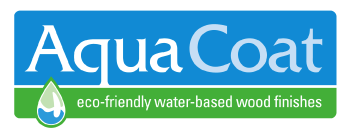Advantages of Waterborne Wood Finishes
Fast building
The key to any finish is the resin, or solid, that dries to form the final film. The more solids a finish contains, the thicker the dry film will be. A typical waterborne finish derives 35-50% of its weight from solids, whereas most traditional lacquers have a solid content of 20-25% (or in some cases even lower). The higher solid count in waterborne products helps the finish build faster, requiring fewer coats.
Nonflammable
Waterborne products carry less dangerous material, such as high amounts of solvents. Solvents make other products flammable. Waterborne stain and top coats are more friendly to you as a user and to the environment.
Fast drying
Compared to brushable varnishes and polyurethanes, the drying times for waterborne finishes can’t be beat. Fast-drying properties of waterborne stains and top coats give them definite advantages over solvent-based products, especially when applying them by brush. Waterborne products dry so quickly that dust settling in the wet finish is significantly reduced. If you want to slow down the dry time, you can use retarder.
Clear drying and non-yellowing
The exceptional clarity of most waterborne products makes them the ideal choice when you don't want to change the color of wood. Waterborne finishes won’t yellow with age the way most lacquers and varnishes do.
Durable and scratch-resistant
Resins used in waterborne finishes have improved to the point where most products are as durable, if not more so, than solvent-based materials. Aqua Coat has a Tabletop Commercial Finish that is as tough as nails. This waterborne Tabletop finish forms a tough, flexible film that is highly scratch-resistant and can withstand most forms of abuse.









Leave a comment